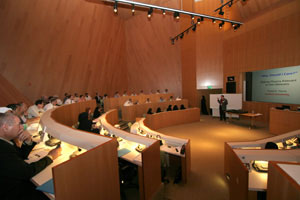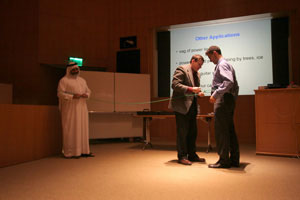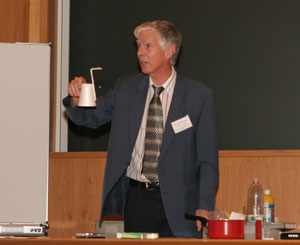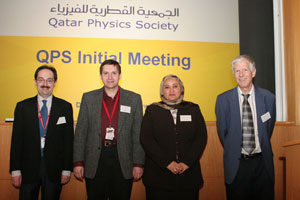New Society takes quantum leap

Overwhelming success: Twice as many delegates as
expected attended the first meeting of the Qatar
Physics Society.
Foam cups, marbles, string and tape were among some of the items used to demonstrate simple, clever and inexpensive physics experiments during the first Qatar Physics Society meeting on April 5.
The meeting, an initiative of WCMC-Q and Qatar University (QU), signaled the formation of the Qatar Physics Society and bought together a delegation of more than 60 people who either work in physics, or have an interest in the field, from scientists and industry professionals to teachers.
With a strong focus on teacher education, the first meeting featured discussions about the organization’s future, led by the society’s founder, professor Ilham Al-Qaradawi of QU. Tools that primary and secondary school physics teachers could use in the classroom to encourage and inspire their students to think outside the box were also featured.

professor of physics, Dr. Robert Thorne,
roping in some volunteers.
Using real life examples, from moving cars and flying birds to an easy way to pull a car from a ditch, the presenters explained some basic physics concepts. They also tasked members of the audience to help with demonstration experiments.
“The general perception that physics is difficult is what we’re set to change,” Dr. Al-Qaradawi said.
Dr. Hinrichs explained: “The mission of the Qatar Physics Society is to enhance the role of physics in Qatar. Both QU and WCMC-Q want to help support that mission, and beginning a dialogue with physics teachers can only help that cause.”

WCMC-Q professor of physics, Dr. Roger Hinrichs,
explains one experiment that teachers can use in
the classroom.
The formation of the Qatar Physics Society followed discussion on teacher education at the first Qatar Physics Conference in December held at QU.

professor of physics, Dr. Robert Thorne,
roping in some volunteers.

and Assistant Dean for Pre-medical Education
Dr. Marco Ameduri, Dr. Robert Thorne,
Dr. Ilham Al-Qaradawi and Dr. Roger Hinrichs.
